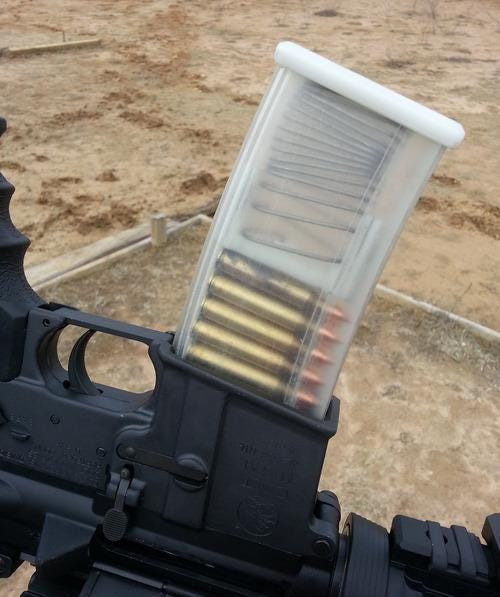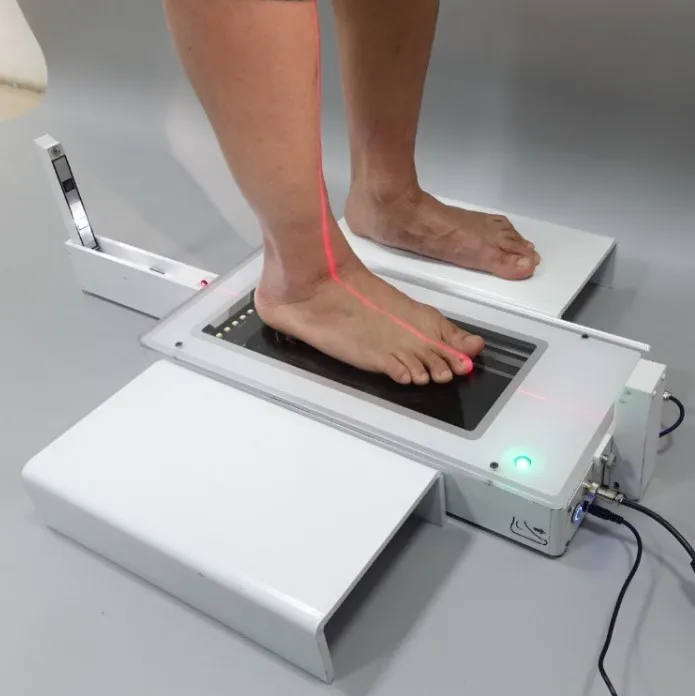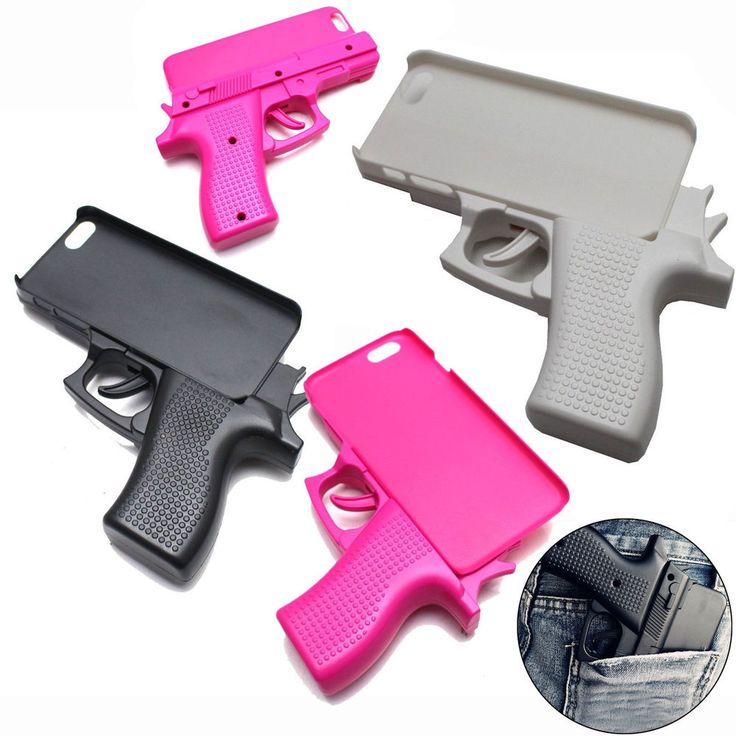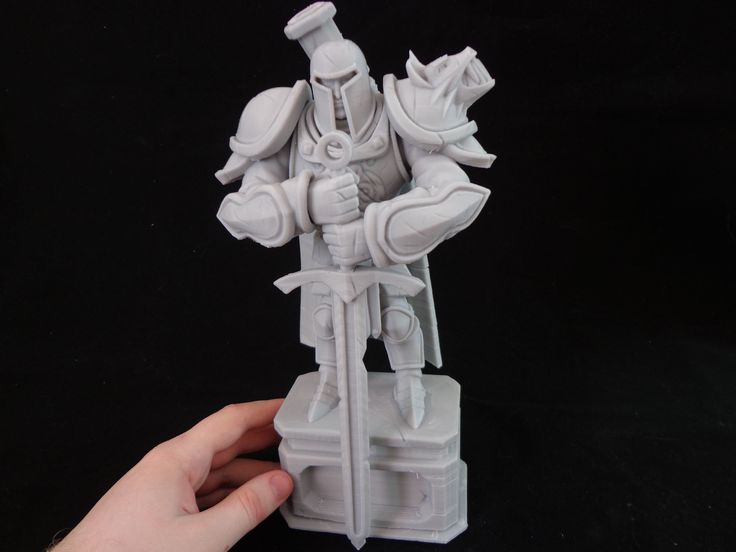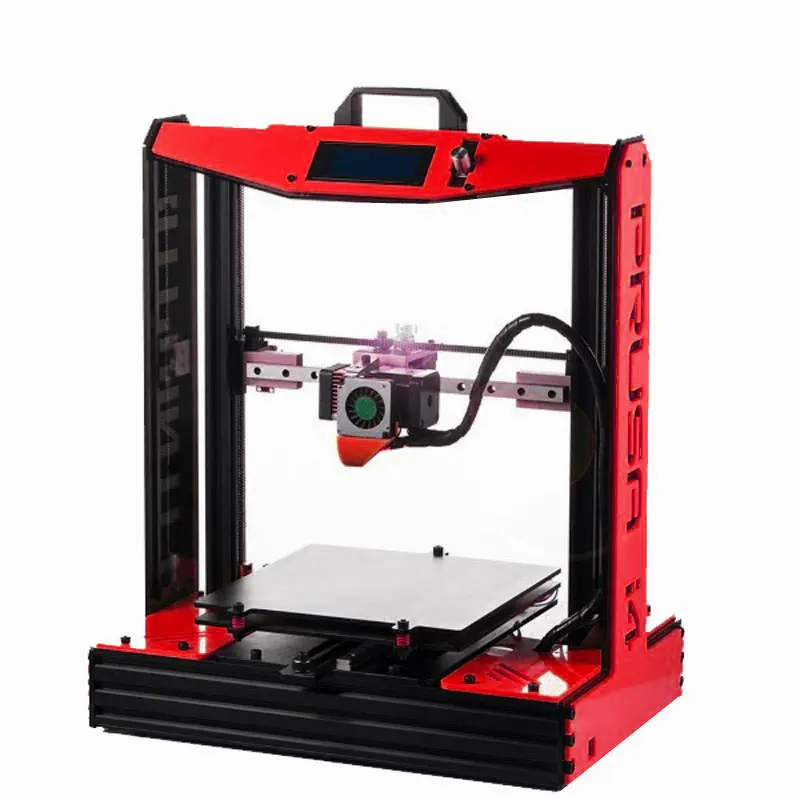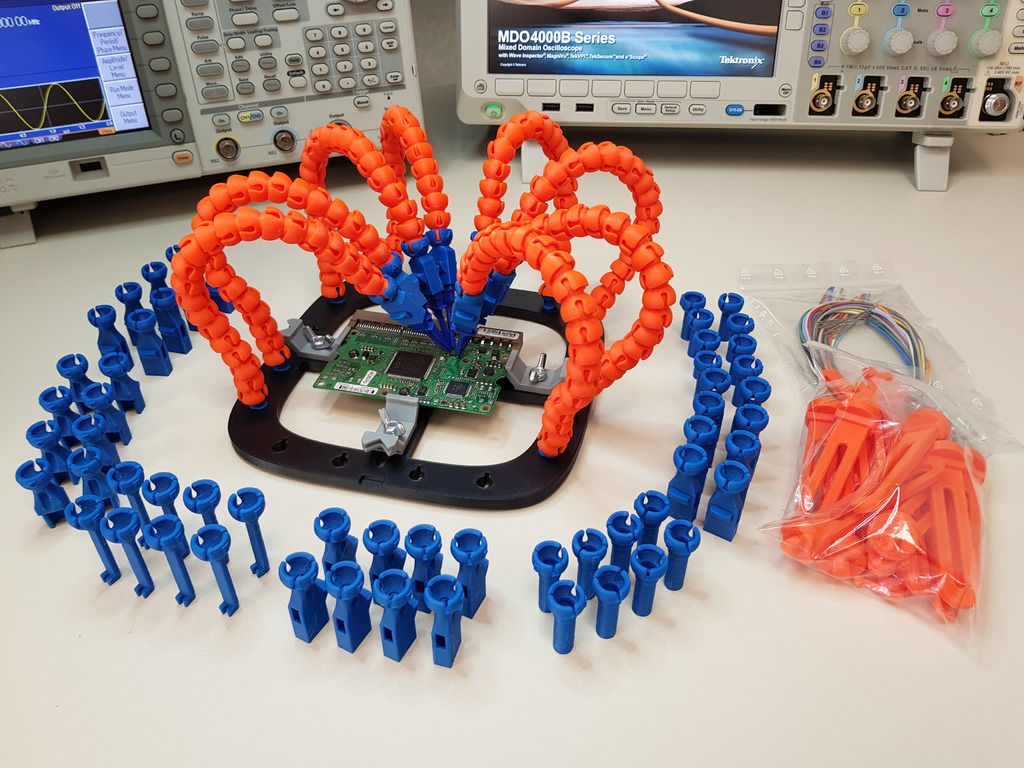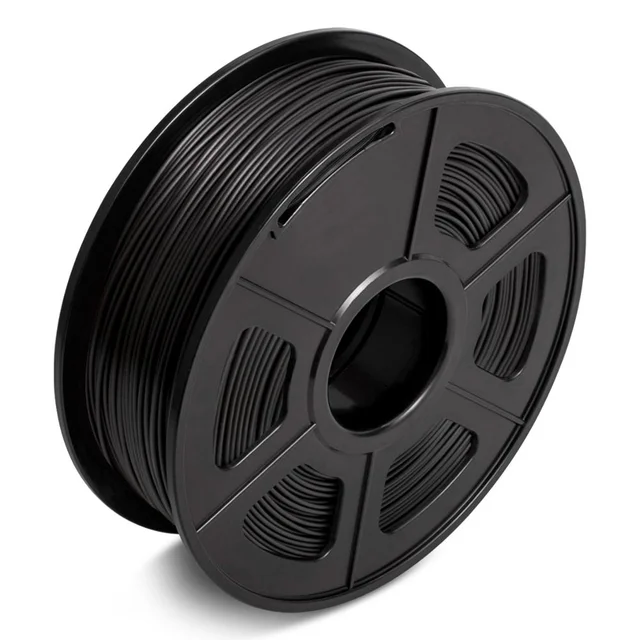3D printing metal guns
As 3D Printed Guns Evolve, So Does Their Threat
Published on November 11, 2022 by Claire S.
According to a report, 3D printed guns have become a compelling choice for criminals and a definite threat to security. In the UK, police made one of the largest seizures of 3D printed weapon components last month and warned of the discovery of a home factory in London where these were stored. Weapons made using additive manufacturing generally have certain small components which can be printed at home using an ordinary desktop printer: this accessibility is a double-edged sword. Where it is a benefit of 3D printing as it allows people creative freedom to produce what they wish, in this case it is a cause for concern as it is by nature difficult to regulate.
As the technology improves, 3D printed guns have developed from being unreliable weapons to a ‘credible’ choice for criminals, according to the National Crime Agency (NCA). Matthew Perfect, head of the National Firearms Targeting Centre, says the latest weapons would pose a definite threat on the street. He suggests that the Covid-19 pandemic could have increased their appeal as international trade and transport was decreased and so people sought to purchase or produce domestically as an alternative method to border smuggling.
A box of 3D printed weapon components found by the Met Police during the raid. (Photo credit: Metropolitan Police/PA Wire/BBC News).
Currently only 80-90% of 3D printed guns are made using the technology. This is because the metal barrel, among other components, is usually made using traditional methods. However, it is possible that in the future as metal 3D printing improves, more of the gun could be made using this technology. Dr Rajan Basra, senior research fellow at the International Centre for the Study of Radicalisation at King’s College London, warns that these weapons are ‘moving into the mainstream’ and one model in particular comes with a 100-page manual and specific instructions for the user. In general, if you look on any website hosting open-source CAD files, users give extensive information to others about how precisely to make the product.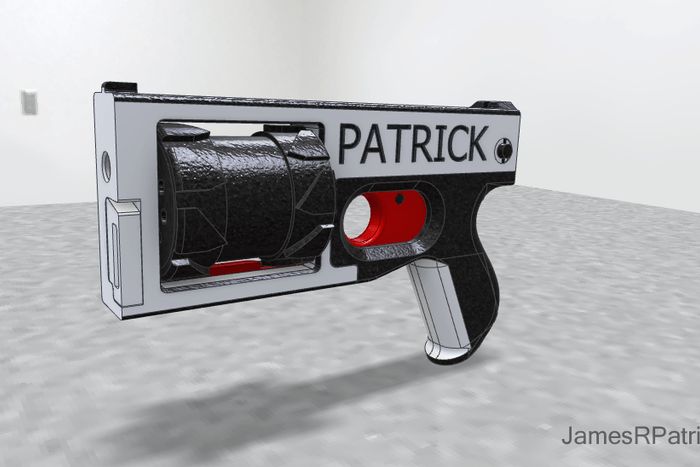 This normally innocuous custom has therefore become a source of judicial concern.
This normally innocuous custom has therefore become a source of judicial concern.
3D printed weapons are not a new problem; they were invented back in 2012 in America, were legalized in the US a year later and have been involved in several crimes since, in the UK, Europe and the US among others. Last year in the US, the Department of Justice proposed a motion to close a legal loophole related to 3D printed weaponry, to ensure they meet the regulatory standards and background checks necessary for traditional weapons. While illegal in the UK (as weapon production is illegal regardless of method), they are nevertheless popular for those who cannot obtain illicit firearms. However, it is the reported reliability of these new guns, as well as their status as automatic weapons which can shoot multiple bullets, which renders them a greater threat. Forces such as Europol are working to combat this threat.
In Australia this year, police found a fully functional 3D printed gun.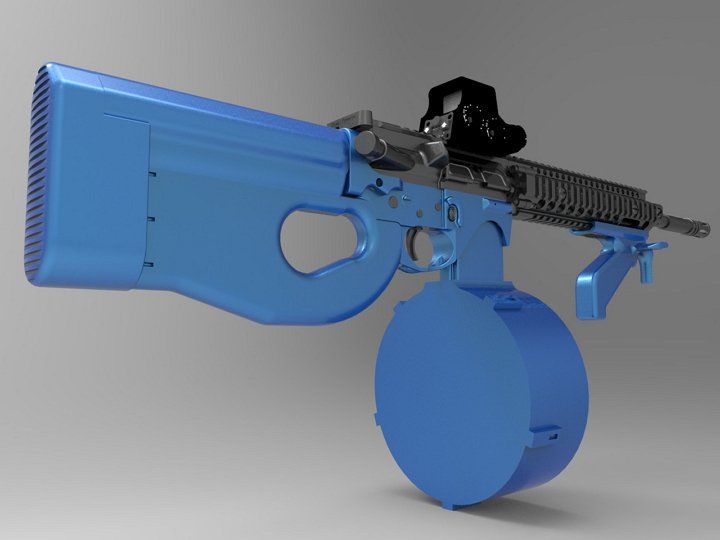 (Photo credit: WA Police).
(Photo credit: WA Police).
What do you think of this story? What do you think is the best way to deal with 3D printed weaponry? Let us know in a comment below or on our LinkedIn, Facebook, and Twitter pages! Don’t forget to sign up for our free weekly Newsletter here, the latest 3D printing news straight to your inbox! You can also find all our videos on our YouTube channel.
*Cover photo credit: Europol
3D printed guns: where are we now?
Published on September 2, 2020 by Aysha M.
Less than a decade ago, millions of people had no idea what 3D printing was and learned about it for the first time when the headlines of international news read “3D printed guns”. Years after the first 3D printed gun was created, people and governments still discuss this topic, the opinions are divided. But how did the story of 3D printed guns begin? What 3D printing technologies are used? Why do some people believe that 3D printed firearms are more dangerous than “traditional” ones, while others disagree? We wrote a review on the subject of 3D printed guns to address these questions.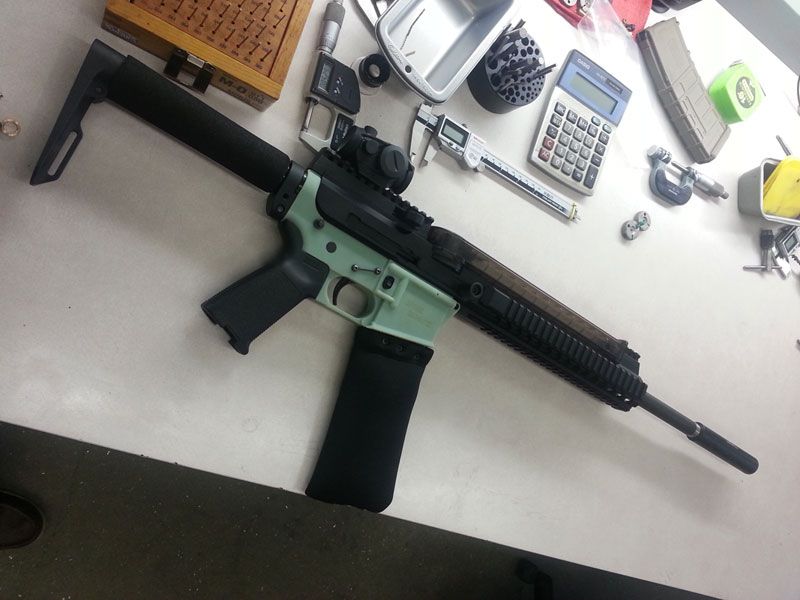
Cody Wilson invents the 3D printed gun
It all started in 2012, when a man named Cody Wilson revealed his plan to make the design of firearms open-source so that everyone could print a weapon at home. A self-proclaimed crypto-anarchist, he was neither a criminal nor a deranged geek, but a Law student at the University of Texas at the time. However, he left the university the next year – to commit, apparently, fulltime to the development and distribution of 3D printed guns. For this purpose, he founded an organization, Defense Distributed, with its own online platform called Defcad. Wilson identifies it not as a tech business, but rather a “nonprofit defense organization”, whose purpose is to fight against government censorship.
Cody Wilson
In 2013, the very first CAD (computer-aided design) gun file became available online, which you could download for free, everywhere in the world. The digital file immediately went viral, with more than 100,000 downloads in just 2 days.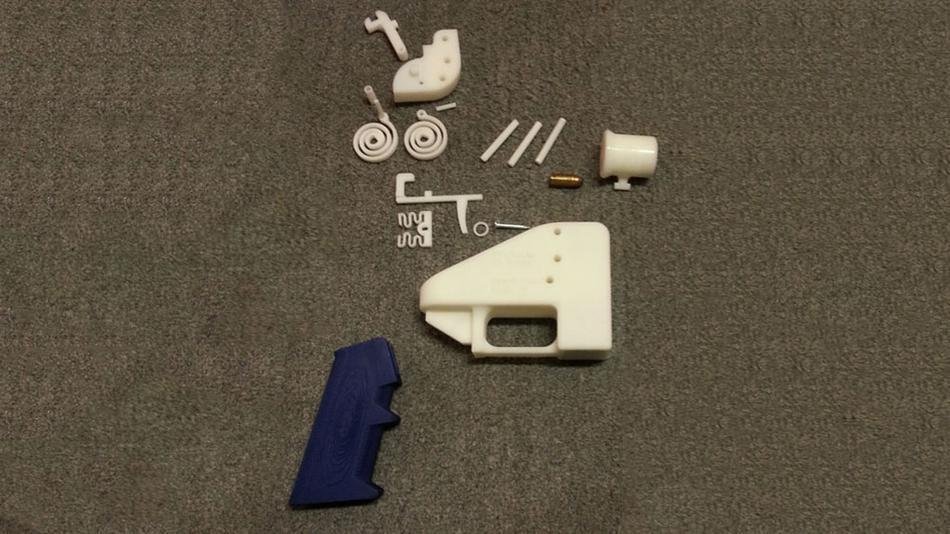 Unsurprisingly, this prompted the US Government to demand that Defense Distributed remove the file from their site.
Unsurprisingly, this prompted the US Government to demand that Defense Distributed remove the file from their site.
3D printed guns in the US
What followed is a legal battle between Cody Wilson and the US Government, consisting of back-and-forth lawsuits. It lasted 5 years, until in 2018, the Trump administration legalized the 3D printed guns. The same year, Wilson was charged with sexual assault of an underage girl, and had to step down from Defense Distributed. Nonetheless, the organization did not cease to exist without Cody. Today, for a yearly fee of $50, the users of the Defcad website can access the files containing different designs of 3D printed guns. The users can not only download but also upload files, that are, by the way, not available to people outside of the US.
An example of a 3D printed gun design.
Interestingly enough, the 2018 legalization by the Trump administration was not the end of the story. In 2019, a federal judge in Seattle ruled the legalization illegal, and thus temporarily blocked Defcad, again. In response to that blockage, Deterrence Dispensed group was formed the same year (2019). While they share the same ideology, this network of gun activists is different from Defense Distributed in that it is completely decentralized, which means that it would be extremely difficult if not impossible to stop them. On their website the activist network states: “Deterrence Dispensed has deliberately chosen not to formally organize. This ensures that nothing can affect us as a group, as occurred to Defense Distributed when the government prevented them as a company from releasing the Liberator pistol plans. (…) Since its inception, Deterrence Dispensed has been releasing open-source firearms knowledge to the public sphere and will continue to do so indefinitely”.
In response to that blockage, Deterrence Dispensed group was formed the same year (2019). While they share the same ideology, this network of gun activists is different from Defense Distributed in that it is completely decentralized, which means that it would be extremely difficult if not impossible to stop them. On their website the activist network states: “Deterrence Dispensed has deliberately chosen not to formally organize. This ensures that nothing can affect us as a group, as occurred to Defense Distributed when the government prevented them as a company from releasing the Liberator pistol plans. (…) Since its inception, Deterrence Dispensed has been releasing open-source firearms knowledge to the public sphere and will continue to do so indefinitely”.
3D model of a firearm.
All gun activists, including Defense Distributed and Deterrence Dispensed, refer to the Second Amendment of the US Constitution, « A well-regulated Militia, being necessary to the security of a free State, the right of the people to keep and bear Arms, shall not be infringed».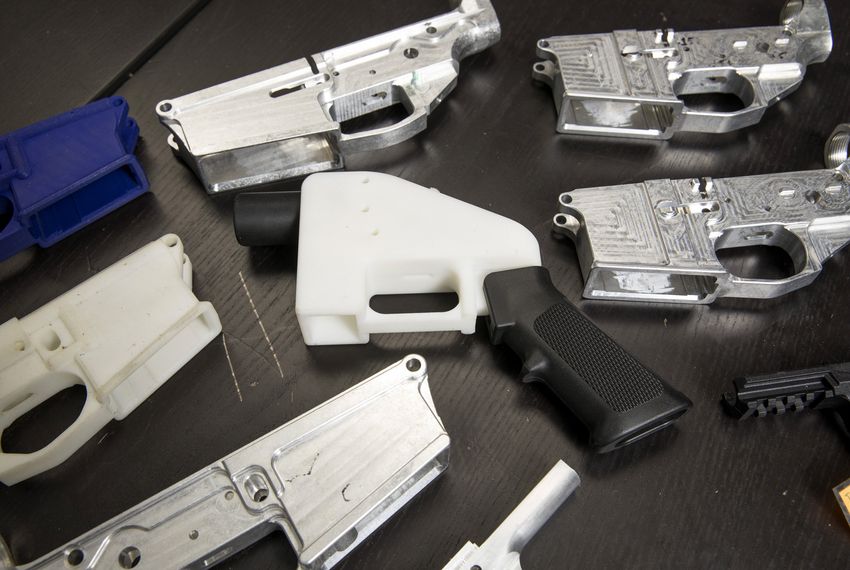 So, the legal battle between gun activists and the US Government still goes on today. In early 2020, a coalition of 20 states and the District of Columbia filed a lawsuit against the federal government over the Trump Administration’s decision to allow sharing 3D printed gun files on the internet.
So, the legal battle between gun activists and the US Government still goes on today. In early 2020, a coalition of 20 states and the District of Columbia filed a lawsuit against the federal government over the Trump Administration’s decision to allow sharing 3D printed gun files on the internet.
Types of 3D printed guns
The 3D printed firearm is also known as the “ghost gun”, since it doesn’t have a commercial serial number or any other marks that could potentially help identify the owner. The Liberator .380 – the one designed and released by Cody Wilson in 2013 – was the first 3D printed plastic gun. It was a single shot pistol made with Fused Deposition Modeling on a Stratasys Dimension SST 3D printer. Up until today, the Liberator is the closest thing to a fully plastic gun, although it still requires a steel nail that serves as the firing pin. An important characteristic of a plastic gun -and a reason to fear it – is that it does not trigger metal detectors. But more about it later.
The Liberator, the first 3D printed gun.
While Liberator might be the best-known 3D printed gun made from plastic, there are also stronger and more reliable guns that can be made using metal 3D printing. For example, the Solid Concepts replica of Browning 1911 handgun was the first 3D printed metal gun. Solid Concepts was an AM company based in California, but it was acquired by Stratasys in 2014. Their 3D printed metal handgun was built using Direct Metal Laser Sintering (DLMS) technology, and could fire more than 600 bullets without any damage to the gun. It is believed to be the most reliable metal 3D printed gun made so far.
However, while the metal guns are much more reliable than the plastic ones, they are also quite out of reach to an average person. The metal printer used to create the Solid Concepts 1911 weapon cost between $500,000 to $1 million at the time the gun was created (November 2013), and the gun itself was being sold for $11,900 a piece.
The first 3D printed metal gun by Solid Concepts.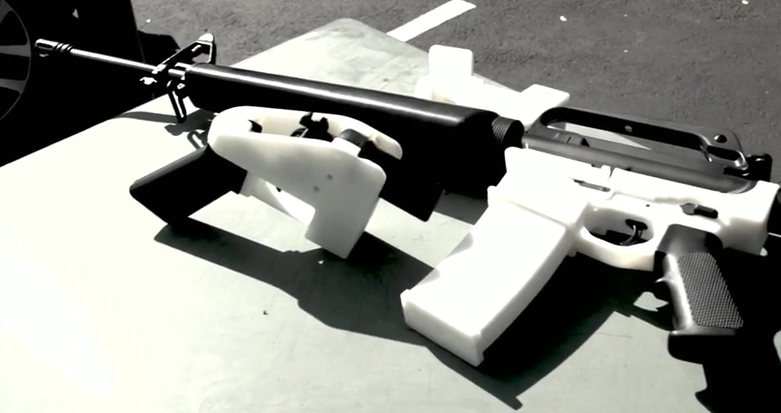
The technology behind 3D printed guns
When discussing the actual process of 3D printing a firearm, it is important to note that a 3D printer simply cannot create a complex mechanism like a functional gun all in one piece. Thus, the individual elements are all printed separately and later assembled manually. It is a rather long process, and not an easy one either.
As for the materials, in order to manufacture a gun with an FDM 3D printer, one can choose between several types of thermoplastics. However, it is usually either PLA or ABS that is used for this purpose. But even these thermoplastics are not perfect for the fabrication of a functional gun. PLA is softer, so a part made from it typically deforms very quickly. ABS is harder, but it only means that it will crack and break rather than deform. Therefore, the user can usually only fire one bullet before a thermoplastic part breaks – the explosive force of firing a bullet being too powerful. For example, in 2013, a police department in Australia tested out a 3D printed gun: they were able to fire a 17 centimeters bullet, but the plastic immediately exploded once the bullet was discharged.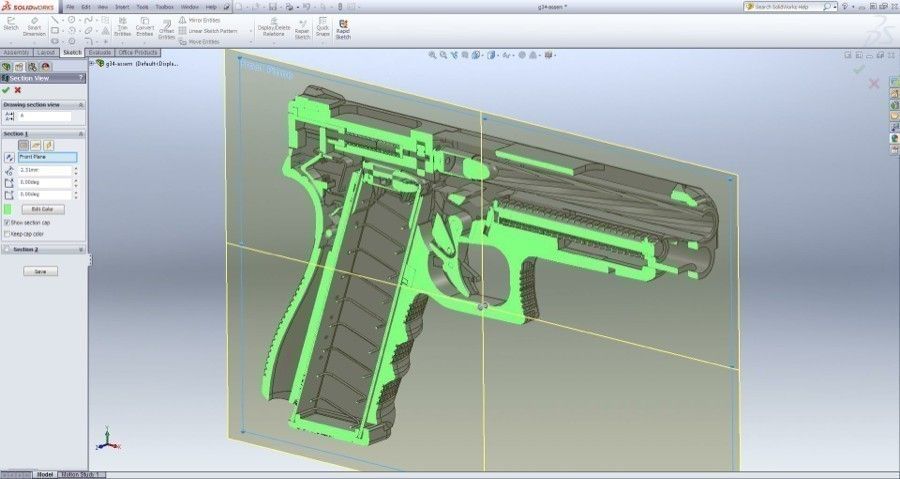
The Liberator before being assembled.
Debate and controversy
Naturally, there is a conflict between gun activists and those that passionately denounce gun violence. In the United States, most of the time, the debate about 3D printed guns represents a wider debate about guns and gun violence.
Yet, there are some people who fear 3D printed guns in particular, much more than they do “conventional” ones, and they have their own arguments. Firstly, they fear the untraceable nature of this weapon, since it makes it rather difficult to identify the shooter. Secondly, and perhaps even more importantly, as the makers and owners of 3D printed guns are not subject to background check, a person can 3D print a gun even if they are mentally ill, felons, or underage.
In addition, plastic guns do not trigger metal detectors, which is a solid reason to ban this type of firearms. Even if a thermoplastic gun is prone to break after a single shot, it can still kill or injure one person. For instance, in 2013, three Mail on Sunday reporters 3D printed a Liberator pistol on a 3D printer that cost less than $2,000, and boarded a Eurostar train with it. Since the gun was plastic, metal detectors weren’t set off and the men smuggled the disassembled gun by putting parts in each of their pockets. The Liberator was then reassembled in the train toilet cabin. This experiment proves how easy it is to smuggle deadly weapons, even to places with relatively high security, such as airports and train stations.
For instance, in 2013, three Mail on Sunday reporters 3D printed a Liberator pistol on a 3D printer that cost less than $2,000, and boarded a Eurostar train with it. Since the gun was plastic, metal detectors weren’t set off and the men smuggled the disassembled gun by putting parts in each of their pockets. The Liberator was then reassembled in the train toilet cabin. This experiment proves how easy it is to smuggle deadly weapons, even to places with relatively high security, such as airports and train stations.
A Sunday Mail reporter holding the 3D printed gun in Eurostar train. (Image credits: Mail on Sunday)
On the other hand, there are just as many people who believe that it is unreasonable to fear 3D printed guns more than traditional ones. According to them, 3D printed guns can’t even function well enough to become widely used – most of the time the gun just explodes in the user’s hands, breaks, or deforms.
Overall, it is true that the present state of desktop 3D printing doesn’t quite allow high-quality guns to be produced at home, plus it is a slow and complicated process.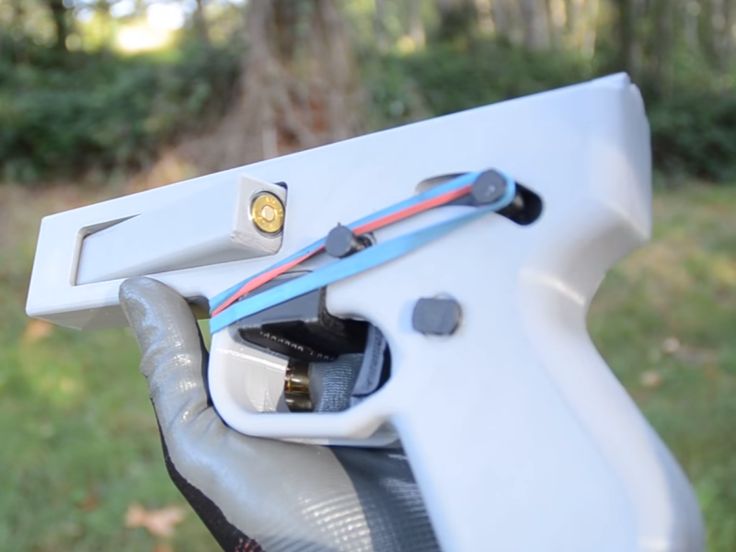 But it is not unlikely to change as the technology advances. The future might indeed be alarming, since AM technologies are evolving rapidly, with a wide variety of new materials being constantly developed and released. For example, metal 3D printing is 10-100 times faster – and relatively cheaper – than it used to be back when 3D printed guns first emerged. Therefore, some believe that 3D printed firearms will pose a threat in the future. The question is, how distant is that future?
But it is not unlikely to change as the technology advances. The future might indeed be alarming, since AM technologies are evolving rapidly, with a wide variety of new materials being constantly developed and released. For example, metal 3D printing is 10-100 times faster – and relatively cheaper – than it used to be back when 3D printed guns first emerged. Therefore, some believe that 3D printed firearms will pose a threat in the future. The question is, how distant is that future?
What do you think about the 3D printed gun issue?Let us know in a comment below or on our Facebook and Twitter pages! Sign up for our free weekly Newsletter, all the latest news in 3D printing straight to your inbox!
is it possible to print pneumatic and firearms
Is it possible to make a gun on a 3D printer and is it legal?
Today's 3D printers offer enormous possibilities. They can print products of almost any complexity. Until quite recently, it was difficult to even imagine that a plastic weapon could shoot.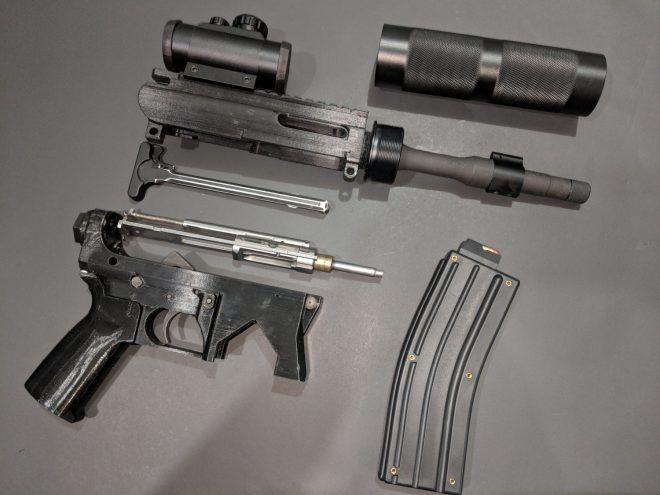 However, it is already possible to make a pistol on a 3D printer, which, although not reliable, still fires live ammunition. nine0003
However, it is already possible to make a pistol on a 3D printer, which, although not reliable, still fires live ammunition. nine0003
Can firearms be 3D printed?
Back in 2013, a young American gun fighter proved that plastic guns could be 3D printed. He was the first in the world to make a pistol in this way, in which only the striker was made separately from metal. All other parts were printed on an FDM printer.
Today's 3D printers are capable of printing any CAD model, and these models of firearms have been available for over 10 years. If in previous years their printing required professional skills, now almost any user can master them. With a 3D printer and a finished model, it became quite possible to print a gun. Another thing is that such "creativity" is punishable by the laws of most countries. nine0003
The evolution of 3D printed weapons
Despite all the prohibitions and restrictions, the evolution of 3D printed firearms is moving at a great speed.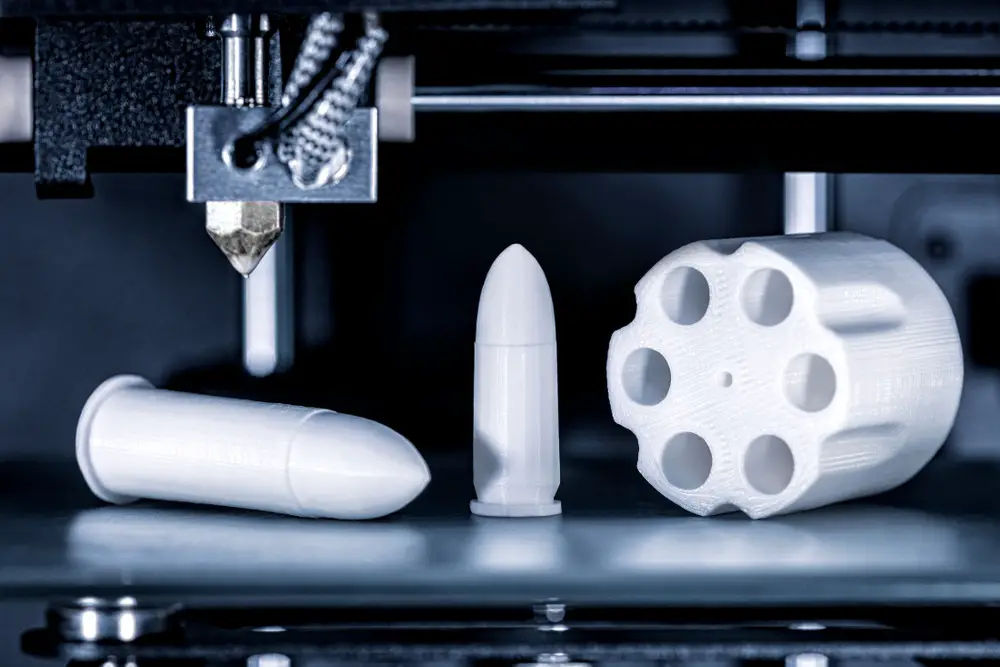 The beginning was laid by the single-shot plastic pistol Liberator by American K. Wilson, which appeared in 2013. It had a simple design and was chambered for 380 ACP. Already after 10-12 shots, this weapon became unusable. However, the very possibility of printing firearms served as an impetus for the development of the idea. The author of the first pistol himself founded the Defense Distributed company, which began to actively improve the technology. nine0003
The beginning was laid by the single-shot plastic pistol Liberator by American K. Wilson, which appeared in 2013. It had a simple design and was chambered for 380 ACP. Already after 10-12 shots, this weapon became unusable. However, the very possibility of printing firearms served as an impetus for the development of the idea. The author of the first pistol himself founded the Defense Distributed company, which began to actively improve the technology. nine0003
One of the ways to increase the durability of weapons was to increase the number of their barrels. At the beginning of 2014, the Japanese Y. Imura makes a 38 caliber Zig Zag pistol. He was able to fire up to 6 shots non-stop. The author of the weapon was recognized as a criminal and convicted.
The next step was the production of a six-shot revolver by J. Patrick in 2015. The PM522 Washbear has been shown in action on YouTube. The weapon was noticeably safer for the shooter compared to previous versions, but still allowed to fire only a few dozen rounds.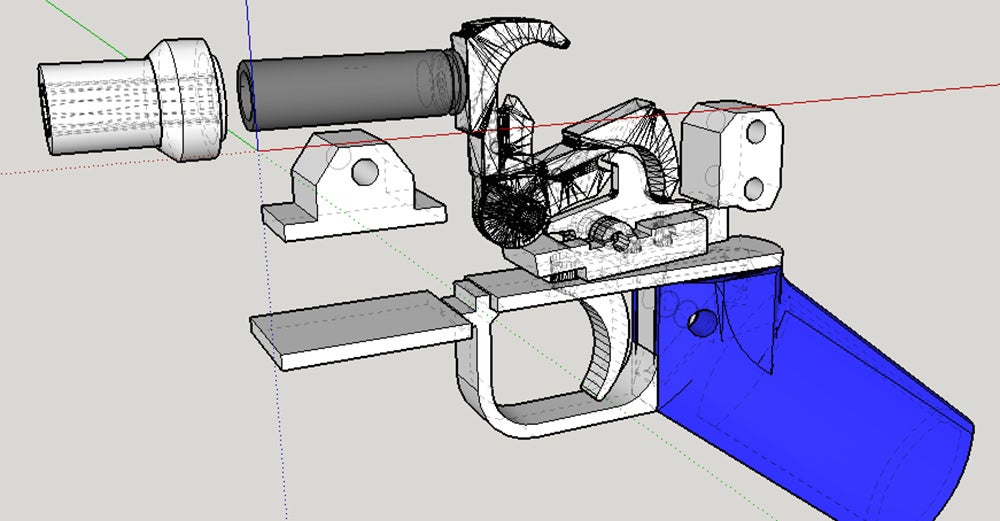 nine0003
nine0003
The first semi-automatic pistol for a 9 mm bullet appeared in 2016 under the name Shuty-MP1. It was developed by a handicraft gunsmith who hid under the pseudonym Derwood. It wasn't exactly a plastic weapon. The author used some metal parts from factory pistols - a barrel, a firing pin, a bolt and several springs. This made it possible to ensure a rate of fire of more than 46 rounds / min. However, when changing the store, the plastic case had to be cooled. In 2017, the same master proposed an improved model - Shuty AP-9.
The main contribution to the development of 3D printed weapons technology was made by Defense Distributed, which united a group of like-minded activists. First, these enthusiasts won legal proceedings in the United States and obtained permission to 3D-print weapons, which greatly expanded their capabilities. Secondly, they were able to set up a professional business with product testing and quality control. As a result, in 2018–19 they developed numerous models of a variety of firearms - from pistols to carbines. They posted over 30 files for printing original gun parts. Most of them were plastic, and the metal parts were not made from purchased, ready-made elements, but from simple metal profiles (tubes, strips, etc.), which are sold in ordinary hardware stores. This made it possible to exclude the use of parts patented by gunsmiths. nine0003
They posted over 30 files for printing original gun parts. Most of them were plastic, and the metal parts were not made from purchased, ready-made elements, but from simple metal profiles (tubes, strips, etc.), which are sold in ordinary hardware stores. This made it possible to exclude the use of parts patented by gunsmiths. nine0003
At the moment, the semi-automatic carbine FGC-9, developed on the basis of the Shuty AP-9, has become the pinnacle of "creativity" of Defense Distributed. At the same time, there is not a single factory part in it. The barrel for the 9 mm cartridge is made of steel pipe using electrochemical processing.
Where can I get drawings and what should I look for?
Gun manufacturing bans make it much harder to get blueprints and models of guns for 3D printing. The right to free placement of information was achieved only by Defense Distributed. Their website provides free access to drawings, models and technologies. Other information can be found on the Internet, but they are usually illegal.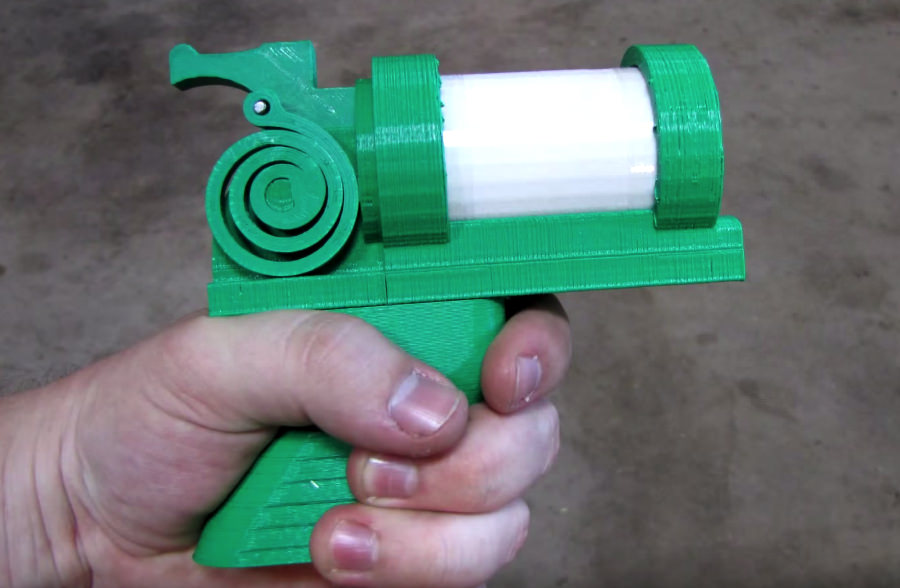 nine0003
nine0003
When choosing a model, pay attention to the following information:
- material used;
- cartridge for which the model is designed;
- number of cartridges in the magazine, rate of fire;
- operating time before failure.
It is important to clarify which metal parts will need to be purchased separately, in addition to plastic for printing on a printer.
What does the law say in different countries?
The only country where firearms can be 3D printed is the United States. Gun Control Act 19 applies here68, giving Americans the right to make weapons, but only for personal use. Only one limitation is put forward: it must be determined by metal detectors, that is, it must have a metal element. In virtually all other countries, homemade manufacture and repair of weapons for any purpose is prohibited by law. In Russia, printing it on a 3D printer falls under the Criminal Code of the Russian Federation and is punishable by imprisonment.
Should we be afraid of plastic weapons?
The question of how dangerous a weapon printed on a printer is becoming increasingly important. Despite all the prohibitions, it is extremely difficult to control the spread of technology around the world. The availability of 3D printers and the increase in their functionality make it possible to master the production of plastic guns at home. How dangerous is such a weapon? nine0003
Most experts agree that currently printed weapons are more of an interesting toy. It is quite expensive and is designed to carry out only a few dozen shots. Moreover, such pistols are quite dangerous for the shooter himself with live ammunition, because they can explode in their hands.
However, the danger cannot be underestimated. It is easier and cheaper for a "serious" criminal to buy illegal military weapons than to make them on a printer. At the same time, there may be "enthusiasts" who, for their own interest, can make a pistol and try it out in action.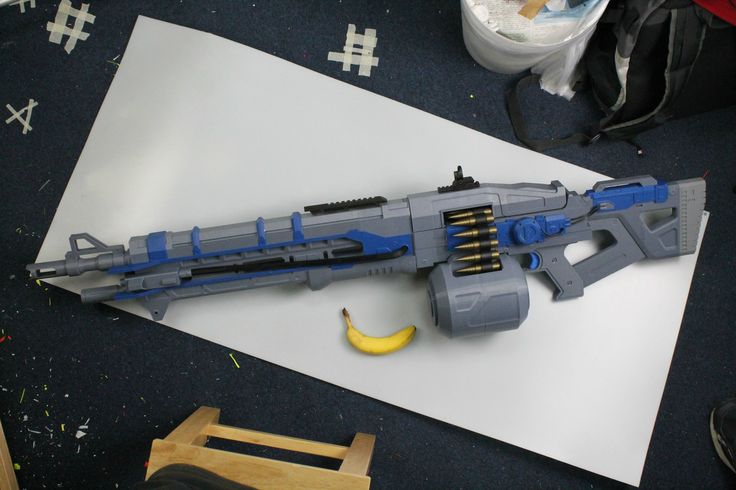 Such inadequate people represent an undoubted danger. In addition, the temptation is great for terrorists. Metal detectors do not detect a plastic gun, which means that it is easier to carry it, for example, on an airplane. nine0003
Such inadequate people represent an undoubted danger. In addition, the temptation is great for terrorists. Metal detectors do not detect a plastic gun, which means that it is easier to carry it, for example, on an airplane. nine0003
Important! Plastic weapons have a very small resource. At the same time, sometimes just one shot is enough to kill a person.
3D printed firearms have the following advantages:
- the ability to make military weapons at home;
- light weight;
- availability of materials;
- Ability to copy famous weapon models.
Always remember that there are significant disadvantages:
- illegal production;
- high cost of weapons;
- very small resource and limited rate of fire;
- danger to the shooter himself.
Currently, plastic weapons have more disadvantages than advantages, and most importantly, you can get a real prison term for making them.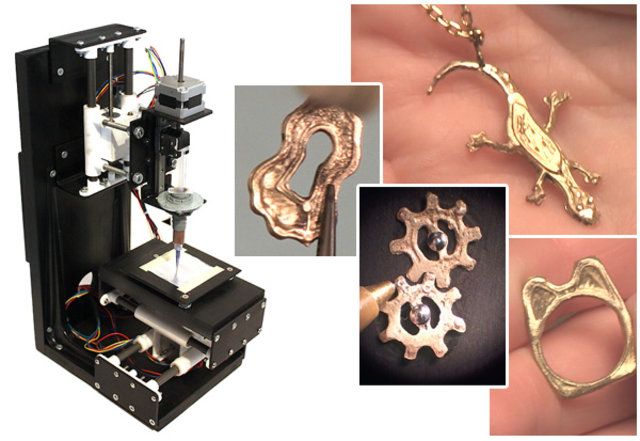
Prospects for printing weapons
The potential for 3D printing of firearms is far from exhausted. The expansion of equipment capabilities and the development of innovative materials indicate that in the near future such weapons may approach military weapons in terms of characteristics. In the future - a significant increase in the resource and the provision of automatic firing. nine0003
Significantly increases the reliability of printed pistols and carbines SLS technology using metal powder. Such weapons already differ little from the factory metal models. While it is very expensive, which significantly limits the application. However, over time, the material will become cheaper, which means it will become more affordable.
Printing firearms on a 3D printer has become a reality. Despite its extremely low performance and reliability, interest is growing in it. Experts predict that the printing of weapons will become widespread, and it is impossible to stop such production.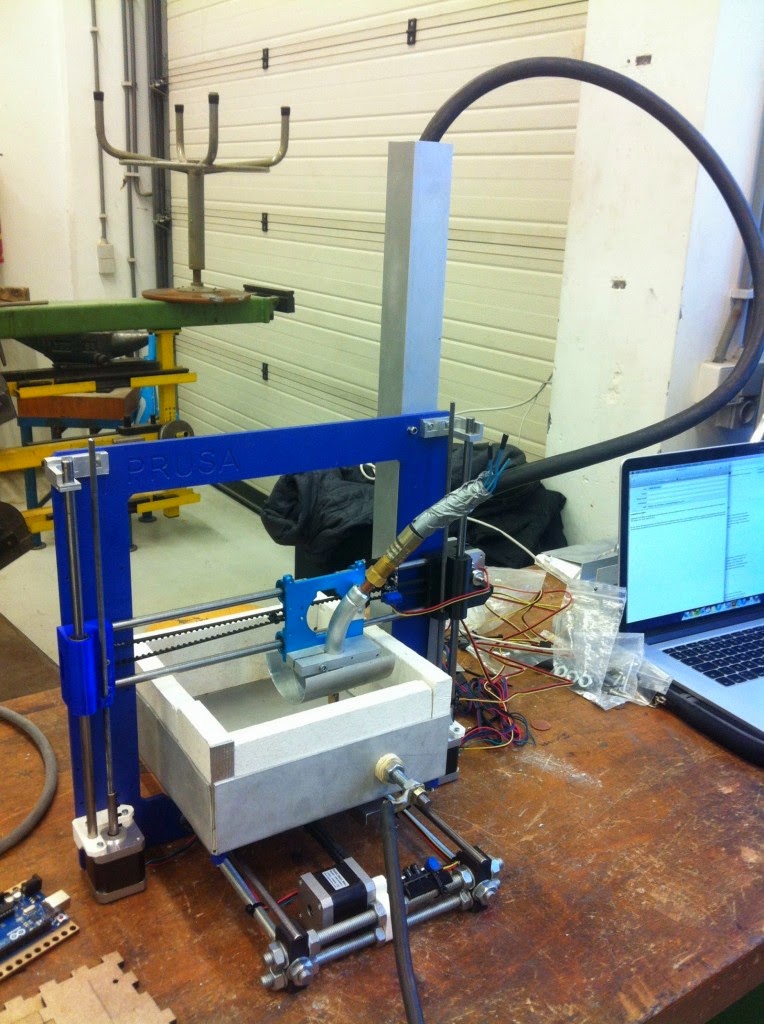 There comes a time when measures should be taken at the legislative level to establish effective control over this process. nine0003
There comes a time when measures should be taken at the legislative level to establish effective control over this process. nine0003
- March 21, 2021
- 5165
Get expert advice
3D printed weapons: myth or reality?
Photo: Scott Olson / Getty Images
Is it possible to create a pistol, submarine or grenade launcher using 3D printing and without legal consequences, found out the host of the RBC Trends YouTube channel Nikolai Dubinin
logos on a 3D printer is gradually entering the industrial circulation. Many are wondering what the potential of this technology is. In September 2020, an underground workshop was found in Spain with two 3D printers, an exact copy of an assault rifle, and parts of other weapons. The trial in this case was classified as “secret” for several months, and the incident became known in early April 2021.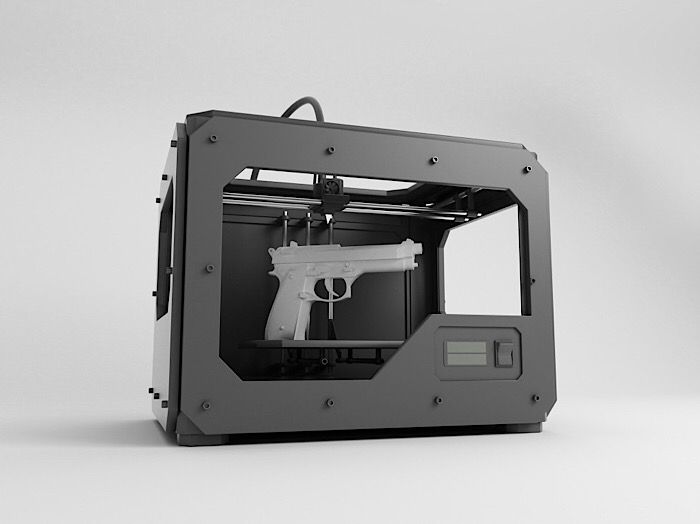 Do 3D printers really allow you to create weapons that can be used in practice, or are they just plastic models? nine0003
Do 3D printers really allow you to create weapons that can be used in practice, or are they just plastic models? nine0003
Real weapon or plastic toy
Alexander Golovin, a 3D printing engineer, said that the materials used in printers are not engineering. They are unlikely to hold the structure in the case of the production of weapons or other heavy items. The maximum that 3D printers are capable of so far is printing key rings, gifts and logos. Of course, you can also print a gun, but functionally it will not differ in any way from a children's plastic toy and it will not work to shoot from it. nine0003
The thing is that the material for a 3D printer is fragile and brittle. To create weapons, you need metal parts that could support the main warhead: the receiver, the barrel itself and the bolt. But you should not do this: for a fake design, you can get a real term.
Is it profitable to print weapons
Printed weapons are unlikely to pay off, and their production will take a long time.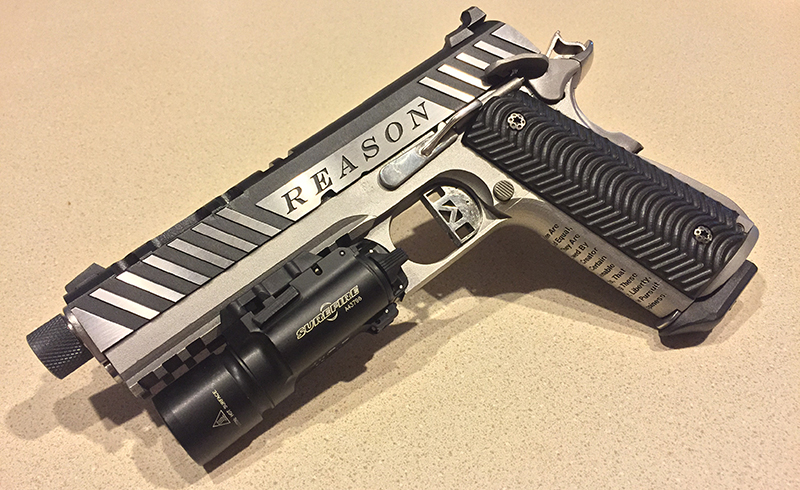 3D printing of weapons on a metal printer will cost about ₽100 thousand. Meanwhile, a rifle in a store can be bought for ₽15 thousand. Of course, you will need to spend money on training and a safe, but it will still come out cheaper. nine0003
3D printing of weapons on a metal printer will cost about ₽100 thousand. Meanwhile, a rifle in a store can be bought for ₽15 thousand. Of course, you will need to spend money on training and a safe, but it will still come out cheaper. nine0003
Even on the black market, the cost of such weapons is much less than the cost of entering the metal printing industry. What's more, it's illegal, so the chance of a 3D weapon maker getting caught increases exponentially.
News about the successful 3D printing of weapons: fact and fiction?
Back in 2013, Solid Concepts printed the Colt 1911 metal pistol. However, this news raises many questions. The classic "colt" has a rifled barrel - it is impossible to print one. Plus, the model requires grinding and processing. nine0003
The news that the US Army has built a 3D grenade launcher is a little embellished. It is quite possible to print a model of a grenade launcher, because this weapon is a pipe - it does not matter what it is made of.